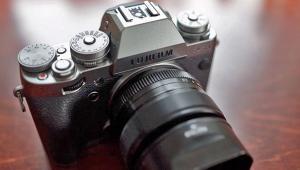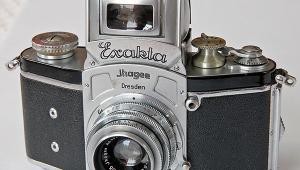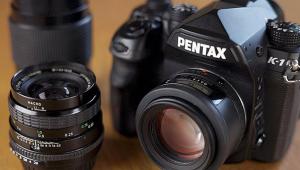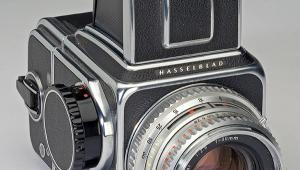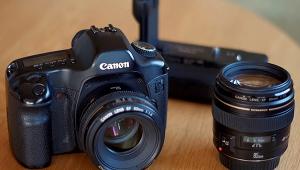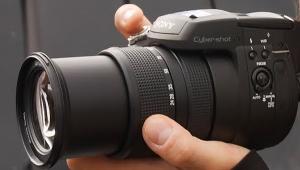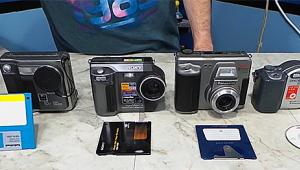Classic Cameras; Exakta Varex IIa; An Adequately Complicated Classic
One reason why digital camera users may hesitate to make the switch to film--better quality, proven archival keeping, and lower cost--is that the cameras aren't complicated enough. For example, my Nikon D70 has around 24 buttons, levers, knobs, dials, trap doors, and switches, many of them multifunctional, plus an LCD read-out and a screen on the back. For comparison, my Leica MP has about a quarter as many, including the shutter release and controls for lens changing and loading the film. And, of course, no LCD read-out or image viewing screen.
 |
|
|
If such an excess of simplicity makes you nervous, consider an Exakta Varex IIa like the one illustrated. The body alone has more than twice as many controls as the Leica, and while it's not quite in the D70 class, it's still quite adequately complicated. Suppose, for example, that you have taken a picture earlier in the day and want to shoot another in poor light. For ease of operation I'll assume you haven't changed films or film speeds.
Wind the film on (with the left-handed, 270Þ lever). Wind it all the way in one stroke: trying to push it back before it is fully wound will strip lots of small and irreplaceable gears. Winding on also winches down the mirror (the viewfinder blacks out as soon as you take a picture, and stays that way until you wind on), cocks the shutter, and tensions the shutter regulator for all speeds down to 1/25 sec.
Winch the lens open (in this case a 58mm f/2 Biotar) with the small lever on the bottom of the lens. When you shoot, the lens will close to the preset aperture, but it won't open again.
 |
|
|
Take a reading with the uncoupled meter built into the prism. In low light, you'll need to pop open the little trap door over the metering cell. You'll find (let us say) that it is 1/5 sec at f/2.
Set the aperture on the lens, and then set the main shutter-speed dial (to the left of the prism) to B or T. This is a lift, twist, and drop knob with speeds of 1/25, 1/50, 1/100, 1/250, 1/500, and 1/1000 sec plus B and T. It must only be rotated one way (anticlockwise).
Now wind the secondary shutter-speed dial (on the right end of the camera) as far as it will go. Using the black shutter-speed scale, lift-twist-and-drop the secondary shutter speed to 1/5: the other choices are 1/2 sec, and 1, 2, 4, 6, 8, 10, and 12 full seconds, plus dots for 3 and 5 seconds, plus a red scale I'll come back to later.
Focus with the surprisingly bright, clear reflex finder. Compose, either with the reflex finder or the direct optical finder built into the metering prism.
Fire the shutter release (left handed, of course). You'll hear a faint click as the semiauto diaphragm cuts in; it would be a lot louder if you were not at full aperture, and you'd see the image darken as the lens stopped down. With further pressure the shutter fires and the image disappears in the reflex finder until you wind on again: that's why there's a separate finder in the prism. OK, it's 50mm not 58mm, but the finder is squinty enough that the difference won't matter.
 |
|
|
Even with all this rigamarole, the Varex IIa offers two advantages--all right, three, sorry, probably four--over the vast majority of digital cameras.
First, there's quality. Depending on your criteria, and the subject matter, and the film speed, and the degree of camera shake, a 35mm slide equates to anything from 10 to 30+ megapixels.
Second, there's price: a camera like this should cost from $200-$500, depending on where you buy it. Try and buy even an 8-megapixel camera at this price.
Third, there's longevity. This camera is already the best part of half a century old, and with a CLA every decade or two it should be good for at least another half century.
Fourth, though admittedly not as compared with good, modern D-SLRs such as the D70, there's quicker response time: you get your picture within maybe 60 milliseconds of pressing the shutter release, rather than 1/4-1/3 of a sec later (250-333 milliseconds--and 100 milliseconds is a long time when it comes to the decisive moment).
